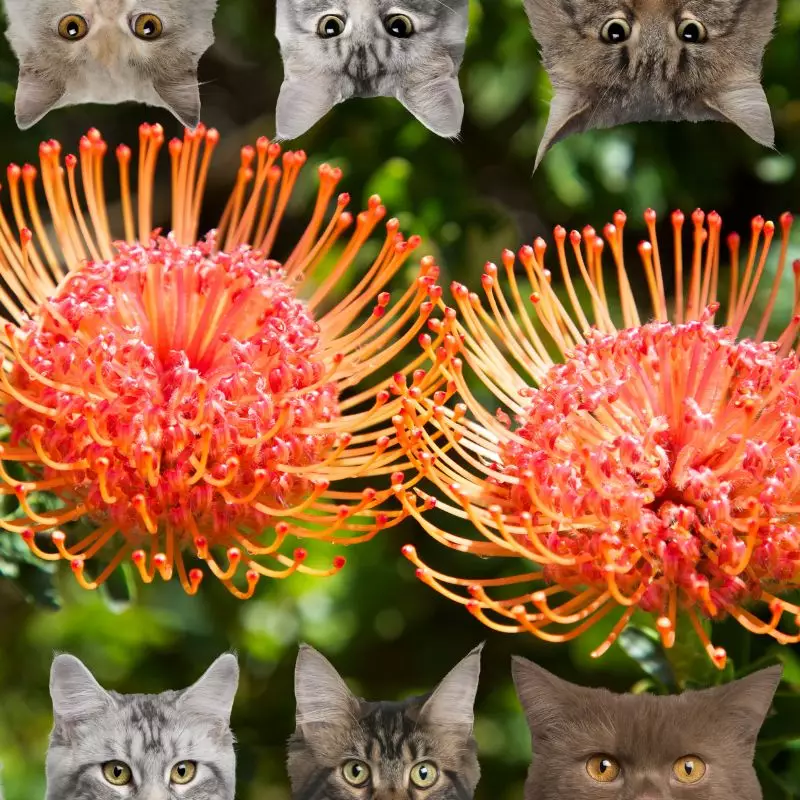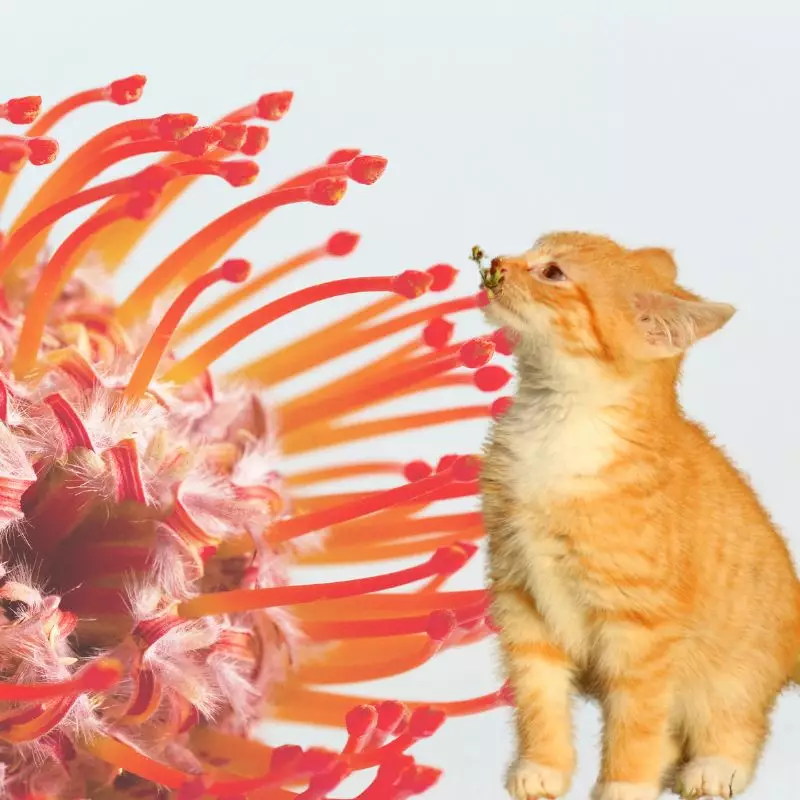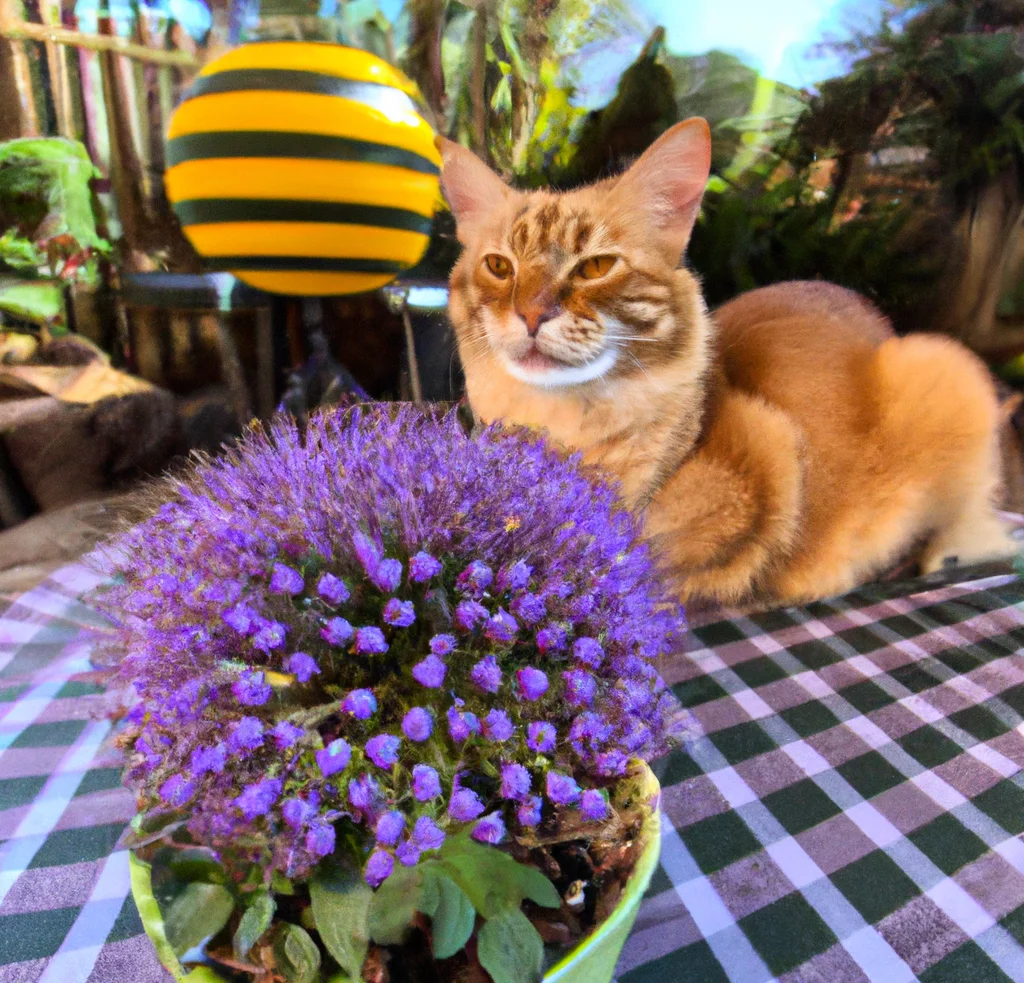No, the pincushion flower is not toxic for cats.
This article is the result of a collaborative effort with a team of experienced DVMs (doctors of veterinary medicine). With their expertise and insights, we can confidently present accurate and up-to-date information about the potential risks of various plants, in this instance, the Pincushion Flower, and their effects on feline companions. In addition to consulting our team of DVMs, we have cross-referenced our findings with reputable and high-authority websites such as ASPCA and PetMD.
Although the pincushion flower is deemed safe not just for cats but also for dogs and horses, it’s worth noting that regular consumption is not advisable, even if the plant is considered non-toxic.
Can Cats Eat Pincushion Flower?

Cats can eat a small piece of pincushion flower without suffering from adverse effects. However, overeating may cause them an upset stomach.
They may exhibit symptoms of vomiting and diarrhea. These symptoms though will eventually go away after the cat has eliminated the plant materials from its body.
Plants are not suitable for cats because they cannot fully digest them. The absence of enzymes needed to properly metabolize plants in a carnivore’s body is the main reason.
What is Pincushion Flower?

The pincushion flower is botanically known as Leucospermum incisum. The long projecting styles and expanded pollen presenter, which together give the flower head the appearance of a pincushion and give it its popular name, make almost all Leucospermum species simple to identify. They are commonly found in South Africa, Swaziland, Zimbabwe, and Mozambique.
The majority of pincushions are single-stemmed, erect shrubs or even small trees that range in height from 1 to 5 meters (3.3 to 16.4 feet). However, some species can grow low mats that are 1–5 m (3.3–16.4 ft) in diameter and only have trailing branches. Many stems are immediately produced from a rootstock in the ground by still another group of plants.
The majority of Leucospermum species have spiraled, seated leaves that are simple, mostly leathery, and often gently hairy, with entire edges or, more commonly, thickened, bony tips and no stipules at the foot. The blossoms are grouped in heads with multiple flowers close together with bracts on the bottom or exterior of the flower. The flower heads are perched or have a short stalk, and they develop alone or in clusters of two to ten in species with large heads, or in the axils of the leaves at the terminals of the branches in species with small heads.
Keeping Cats Away From Pincushion Flower

You might wish to experiment with a couple of different physical obstacles to deter your cats.
Placing objects on top of the soil surrounding the plant’s base such as pinecones will help to drive your cats away. Watering your plants will be possible despite the barrier, but digging will be challenging. One disadvantage of pinecones is that they can be easily knocked out of the planter.
Many plants require less soil than others or may be grown in rocky soil, which is far less appealing to our feline companions. Succulents and air plants are two ornamental alternatives that can liven up your home without getting grubby paws on your cat.
Plants to Avoid For Your Cats
If you are a cat owner and unsure if the plants growing in your yard are harmful to your cats, check out this list of toxic plants for cats. You can also check our list of non-toxic plants for cats.





